Power supply systems differ significantly from one nation to another, yet the frequency of alternating electrical current is one of the most crucial and variable points. Some countries use a 50Hz system, while others prefer 60Hz, leading to a dispute over which frequency is better. But what do the numbers really signify, and how do they affect the performance, function, and compatibility of everyday appliances and industrial systems? This post will thus review the main differences between 50 Hz and 60 Hz, particularly where their strengths and weaknesses lie. It will also cover why specific areas have leaned towards one side of the debate rather than the other. Should you wish to obtain an answer to your query, i.e., which one of the two – 50Hz or 60Hz – is the better one, our responses below should suffice to eliminate the mystery that is the most basic part of modern power supply systems.
Overview of Frequency
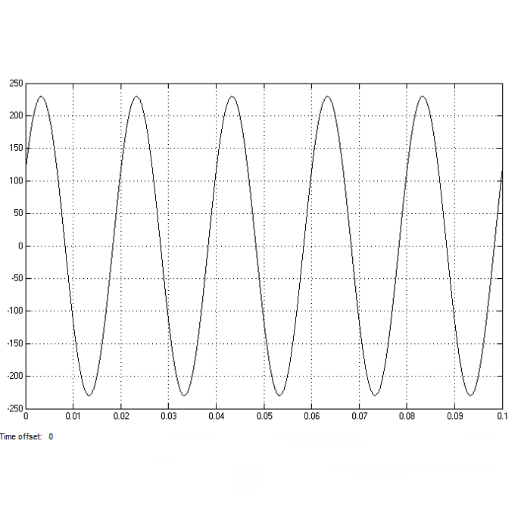
Frequency is the rate at which cycles occur per second, expressed in Hertz (Hz), and it applies to alternating currents (AC). The most commonly used global frequencies are 50Hz and 60Hz, with different regions having different alternatives to the standard. Most parts of Europe, Asia, and Africa rely on 50Hz for their daily tasks, while North America and a portion of South America opt for 60Hz. The choice of frequency significantly impacts the design and operation of electrical devices, as well as their efficiency and compatibility. The country’s frequency of adoption has been determined by historical factors such as infrastructure and the like. The 50Hz and 60Hz systems are both good; however, the choice between them goes beyond preference as it concerns standardization and location of installations.
What is Frequency?
The term “Frequency” in physics means the number of times a wave completes one cycle in a second, as measured in hertz (Hz). As an illustration of the 50 Hz frequency, it indicates 50 oscillations in one second. This information is the very core of physics, electrical engineering, and telecommunications, as it is the property that affects the nature of and results of the waves, of which sound waves, light waves, and radio signals may be a part. In the case of alternating current (AC) transmission, frequency has a significant impact. It plays a major part in the compatibility of electrical devices with the regional grid. Electric grids of 50 Hz and 60 Hz are commonly used, which is why countries’ electric system compatibility depends on the 50 or 60 Hz grid. In a way, frequency has a domino effect, starting from power plants to the performance of domestic devices, and, therefore, people’s lives today are significantly influenced by it.
Understanding 50Hz and 60Hz
Historical and geographical reasons account for the difference between 50Hz and 60Hz frequencies, determining which parts of the world use each frequency. 60Hz is the frequency more common in countries like the United States and most of North America, whereas 50Hz prevails in Europe, Asia, and parts of Africa. Frequency standards determine the power consumed or supplied by electrical appliances and machines. These standards ensure that devices and machines are optimized to operate at a single frequency. Running a device on the wrong frequency can decrease its effectiveness or, in the worst-case scenario, lead to a breakdown.
Infrastructure compatibility is a vital factor that causes the differing standards among the mentioned topics. That is to say, a 60Hz system can be slightly more efficient for motor and generator operation, making it quite suitable for industrial applications. But 50Hz systems usually require more design effort and larger transformers, which, once constructed, can efficiently carry voltages over long distances. Modern technology, such as frequency converters, helps bridge the gap between the two standards, ensuring compatibility in an increasingly interconnected world.
Furthermore, some other interesting aspects also focus on the frequencies used for the grid. The integration of renewable energy sources and frequency control of the grid seems to be the next challenge. The power generated from renewable sources–i.e., solar or wind sources–must be fed into a grid having its own regulating standards. This indication of new and continued evolution clearly highlights that the differences between 50Hz and 60Hz systems must not only be accepted but also managed efficiently.
Importance of Frequency in Power Supply
Everywhere in the world, power systems’ stability and efficiency are directly influenced by the frequency. This frequency is the rate at which the alternating current (AC) is changing, and it affects the operation of electrical devices and grid reliability through direct and indirect effects, respectively. The norm for power grids’ frequencies is usually Hz—50 in a lot of Europe, Asia, and Africa, and 60 in North America and sections of South America. It is essential that the frequencies be stable to avoid disturbances like equipment breakdowns, blackouts, or even complete grid collapses.
Contemporary power grids are becoming increasingly intertwined with unpredictable power sources, such as wind and solar energy, which makes them prone to frequency fluctuations. Possibly, as per research, changes in frequency can lead to increased wear and reduced efficiency of machines in industries, as well as certain parts of the power infrastructure. These solutions include the use of real-time demand response systems and battery storage, which are some of the most effective means to minimize the effects of variations between electricity demand and supply. They also enhance system security and adaptability to modern energy usage. Reducing greenhouse gas emissions through renewable energy is environmentally friendly, and an increasing number of people support such measures to address the problem. Thus, it is unquestionable that managing the mentioned topics is as essential as optimizing existing energy usage, as it ensures a reliable and sustainable energy future by adopting proper methods.
Differences Between 50Hz and 60Hz
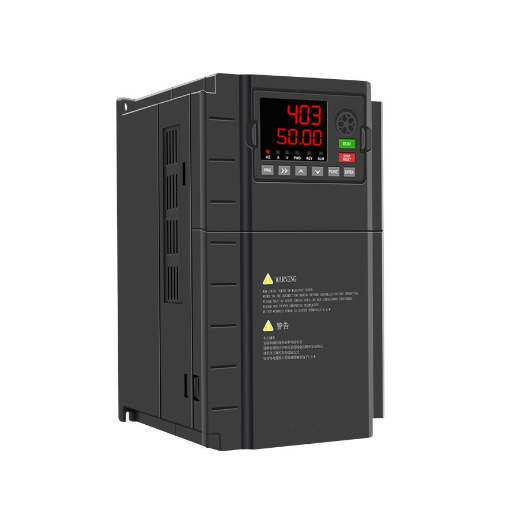
The main difference between the last-named two lies in the frequency of alternating current in electrical systems. This frequency indicates the number of cycles per second through which the current alternates.
- Power Standards: The standard for the current in many countries worldwide is 50Hz (e.g., most of Europe, Asia, and Africa), whereas 60Hz is the standard in the USA and parts of the Americas, which explains why the USA has 60Hz.
- Efficiency: Usually, slightly smaller and lighter equipment, especially motors and transformers (with fewer transformers), can be tolerated in 60Hz systems. This is an excellent advantage as losses at this frequency are lower.
- Compatibility: Device producers, most of the time, go for a single and unambiguous frequency that their machines are designed for. Appliances or machines built for 50Hz may not operate at all, or may only do so with many restrictions, when 60Hz is the frequency in use. Conversely, this is equally true for the reverse.
- Equipment Wear: The wrong frequency operation of a device may cause it to get hot or be inefficient, hence reducing its lifespan.
Getting cloud knowledge is a must if you want to be on the safe side by ensuring your electronics function properly in areas with varying current.
Technical Differences
| Key Point | 50Hz | 60Hz |
|---|---|---|
| Frequency | 50 cycles per second | 60 cycles per second |
| Voltage Variance | Slightly lower energy efficiency | Slightly higher energy efficiency |
| Region Usage | Common in Europe, Asia, Africa | Common in North America |
| Power Loss | Higher in long-distance transmission | Lower in long-distance transmission |
| Appliance Design | Motors run slightly slower | Motors run slightly faster |
| Transformer Efficiency | Marginally less efficient | Marginally more efficient |
| Historical Adoption | Based on system standards | Based on industrial standards |
| Lighting Flicker | More prone to visible flicker | Less prone to visible flicker |
| Availability | Limited to specific regions | More widespread globally |
| Grid Compatibility | Requires frequency converter | Generally standardized locally |
Applications of 50Hz and 60Hz
Applications of 50Hz Systems
European and Asian Power Grids
The most powerful producers in Europe, Asia, Africa, and parts of South America have a standard of 50Hz on their grids. The choice over an initial period continues to dominate the regions’ power systems, being linked to the adoption of the standard.
Household Electronics
Refrigerators, washing machines, and other electrical appliances that are commonly used in 50Hz regions are specifically engineered to work perfectly on that frequency.
Industrial Equipment
Factories and large machine operators in 50Hz regions ensure that their devices operate within the set parameters according to market standards, thus avoiding the extra cost of a special converter.
Bulk Energy Transmission
Many large voltage lines in 50Hz regions have a bias for this low-frequency operation because they are integrated into the grid and transformer structure.
Applications of 60Hz Systems
North American Power Grids
In the United States, Canada, and certain regions of Central and South America, the 60Hz standard has been more popular due to historical adoption decisions.
High-Speed Rail Systems
Some of the 60Hz systems are used to run high-speed trains, especially in places where grid reliability is a prerequisite for transportation.
Medical Equipment
The use of medical devices calibrated for the 60Hz frequency is so common in hospitals in these countries that it can be taken for granted. This is beneficial because such devices are more accurate and therefore present no risk in the healthcare environment.
Communication Systems
Several networks using 60Hz standards can maintain stable signals and transmit information easily and efficiently, thanks to the standard frequency.
Commercial Lighting
Lighting systems in commercial and industrial areas within 60Hz regions are expected to have the least flickering of lights and the highest lighting efficiency.
Impact of Frequency on Motor Performance
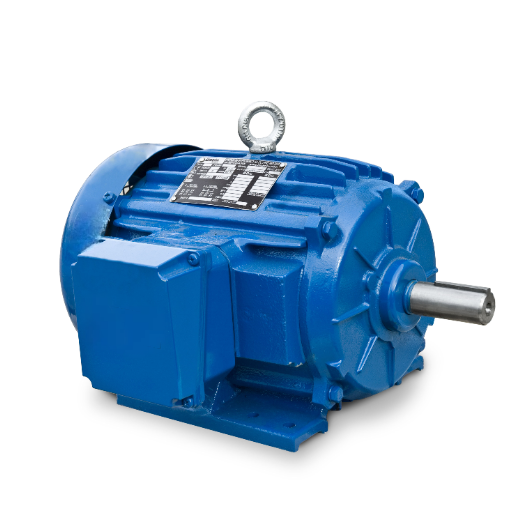
Power frequency, like that of the electric power distribution, significantly impacts the performance of the motor. Motors designed for 60Hz power systems are most efficient at that frequency and can also achieve optimal speed and torque. If the power frequency and the motor’s design do not match, there could be, on one hand, a waste of efficiency and, on the other, the motor may overheat and potentially get damaged. For instance, a 60Hz motor running in a 50Hz network will operate below the nominal speed and power output, while increasing the frequency could lead to high wear. The reliability in operating the motor and also the equipment life expectancy are mainly determined by the compatibility of the motor’s design with the power frequency.
How Frequency Affects Motor Efficiency
A motor is affected immediately when there is a variance in power supply frequency; this effect is the motor speed, often referred to as synchronous speed. The following equation determines the latter:
A lower frequency always results in a lower motor’s operational speed, as well as a lower torque-delivering capability and power. However, a higher frequency increases speed, but it might cause more mechanical stress and heat generation, which could shorten the motor’s life.
Additionally, the motor’s efficiency directly relates to the core losses. When the frequency changes, some undesirable effects may result, including magnetic saturation in the iron core of the motor, decreased efficiency, and increased heating. On the other hand, high frequencies may cause excessive eddy currents and hysteresis losses, further reducing the motor’s efficiency.
To achieve optimal motor functioning, ensuring the operation frequency aligns with the motor design is crucial. At present, the variable frequency drives (VFDs) available in the market are an advanced solution, as they provide the flexibility to adjust the frequency to comply with load requirements and, at the same time, optimize power loss and, consequently, energy consumption.
Motor Compatibility with 50Hz and 60Hz
Electric motors have long been engineered to work seamlessly with either 50Hz or 60Hz electricity, both of which have their own regions of prevalence worldwide–50Hz supply is more common in Europe, Asia, and Africa. In contrast, a 60Hz supply is the rule in the Americas. The motor’s ability to handle these two frequencies largely depends on its design specifications, as frequency is the primary factor determining the motor’s rotation speed. Thus, for example, a motor designed to operate at 50Hz and running on a 60Hz supply will be 20% faster.
Similarly, a 60Hz motor operated with a 50Hz power supply will run at a decreased speed and experience heat dissipation-related problems. If the motor is overloaded, even the reduced speed will be significantly affected. Still, the builders of electric motors have been aware of the issue and consequently have produced today’s motors, which can run at two frequencies and are further assisted by special settings that allow selection of which frequency to switch to when needed. It is crucial to read the manufacturer’s specifications when installing or using motors in different countries or regions with other systems, as these issues could lead to inefficiency, fire, or short circuits, which would be very dangerous.
Choosing the Right Frequency for Motors
When choosing motors with the right frequency, it is necessary to have a clear understanding of the demands of the specific applications, along with the operating conditions. In countries where the power grid is either 50 Hz or 60 Hz, the motor’s frequency can be set to match the grid frequency, making the motor run more efficiently and effectively. For example, 50 Hz systems create motors with lower rotations per minute (RPM) numbers compared to 60 Hz motors with the same number of poles, which affects both speed and power output. Essentially, the type of load and the performance traits one desires should also be important considerations, as some processes absolutely depend on precise speed control. This might also serve as a factor for choosing one frequency over another. The use of tools like variable frequency drives (VFDs) also increases and allows the motors to be flexible, enabling them to change the frequency even when requirements fluctuate, thus making use of energy more optimally and reducing wear. By examining these and referring to the technical specs, the companies may run motors that are reliable and efficient in any environment in which they operate.
Regional Variations in Frequency
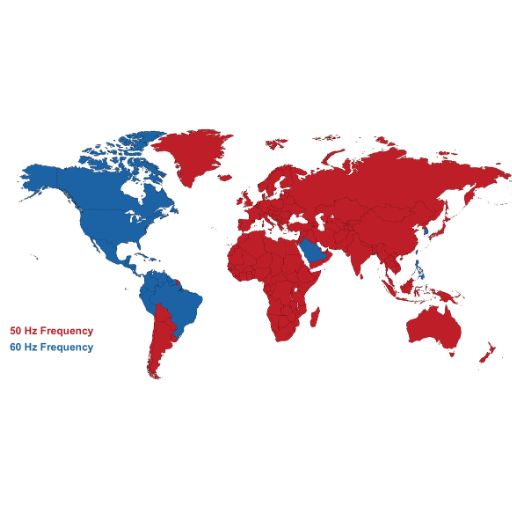
Most Electrical systems around the earth are primarily designed to function at 60 Hz or 50 Hz. Like, 50 Hz is a standard used in Europe, Asia, and Africa, while 60 Hz is used in the United States, Canada, and parts of South America. The basis of this existing issue was actually caused by the historical situation and the choices made during the initial power grid setups. Both frequencies have the same power efficiency, but installing different systems for various localities is the most critical aspect. Appliances like frequency converters can become the solution when there is a need to use devices across regions with other standards.
60Hz Frequency in the Americas
The 60 Hz frequency standard predominantly operates in the Americas, which includes the USA, Canada, Mexico, and much of Central and South America. This choice was made from the early days of the power systems due to its compatibility with synchronous machinery and efficient energy transmission. A 60 Hz system is error-free and, thus, a perfect fit for the modern electrical grid, which has minimal energy loss over long distances.
More than 400 million households in North and South America are statistically dependent on this frequency standard for their electrical systems, ensuring its widespread use for residential, commercial, and industrial purposes. The vast majority of technical devices, including transformers, generators, and motors in these regions, are optimized for 60 Hz, which is the reason why they are so efficient and reliable. Nonetheless, even though the electrification and the integration of renewable energy are increasing in the region and in the countries at the same time, which would maybe lead to the eradication of the 60 Hz standard, the 60 Hz standard will most likely continue to evolve as the fundamental aspect of the region’s energy infrastructure for a while.
50Hz Frequency in Europe and Beyond
50Hz frequency is used around Europe, Asia, Africa, and South America. This frequency has been around since the early days of electricity generation, when the national and regional systems were designed to work together. The 50Hz system has been the most efficient one in terms of power generation, transmission, and distribution. Lower energy losses in the power transmission field are among the key positive aspects of the 50 Hz system, and the fact that it is the frequency standard used by global electrical device manufacturers.
Countries using 50Hz have also made significant progress in embedding different types of renewable energy sources in their grids, like wind and solar power. Advanced grid management technologies assure the stability of the 50 Hz supply by addressing the difficulties resulting from the variable renewable inputs. However, it is still challenging to maintain up-to-date frequency and grid synchronization. Numerous energy storage systems and innovative grid technologies, which are continuously being invented, are expected to increase the reliability of the 50Hz grid further.
Impact of Frequency on Electrical Systems
The operation and reliability of electrical systems greatly depend on frequency, as it touches many different issues, the main ones being efficiency, the quality of energy, and the longevity of the apparatus. Electrical systems are tuned for a particular frequency, which is usually 50 Hz or 60 Hz, depending on the region. Frequency standard non-compliance can have severe consequences, including power cessation, destruction of devices, and lower productivity. The unpleasant power compromises safety and working order, leading to significant potential negative impacts from a reduced supply, i.e., inferior power quality. In particular, the frequency of power supply given by utilities for the two categories of consumers—is a main feed in the faultless operation of these and other consumers who all view the power frequency as one of the key factors that affect network reliability.
The technological progress is one of the significant parts of the response to the problems mentioned above. In the power grid, high-performance frequency monitoring equipment coupled with automatic controls is one of the ways to keep the grid stable. A good example is the case of renewable energy that brings about the problem of frequency fluctuation because of its nature being variable. However, with the support of innovations in battery energy storage and the selection of a real-time grid management scheme, these problems are gradually being solved. The data also indicates that reducing frequency deviation in regions with more than average renewable energy penetration has been considerably aided by the mentioned protective measures. The new-fangled and more efficient methods are made possible by technological improvements, evident in the efficiency, sustainability, and reliability of modern power systems, which continue their legacy in the electrical domain as islands of excellence.
Conclusion: Which Frequency is Better?
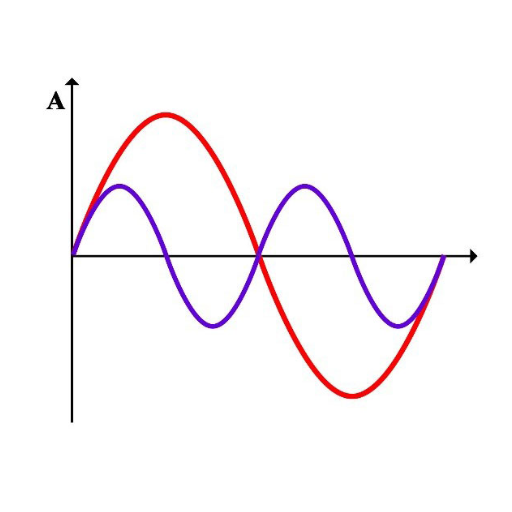
Bottom Line: Both 50 Hz and 60 Hz frequencies have certain advantages. However, neither is clearly superior, mainly because public standards and infrastructures shape the choice. Systems powered by 50 Hz are widely used in many areas of the world and are considered marginally more effective at transmitting electricity over long distances. By contrast, 60 Hz systems allow for the use of smaller and possibly cheaper equipment in specific applications. Thus, the “better” frequency results from the regional past, economy, and technology, and there is no unique solution.
Choosing the Right Frequency for Your Needs
When trying to pick out the best frequency for your system, it is crucial to consider many factors. If the region where your system is located is a 50 Hz country, the situation is different because it will require a significant change and an up-front cost to transition to 60 Hz equipment, and vice versa. Then again, if you have an intended use for the system, such as in industrial plants, 60 Hz frequencies can offer the benefit of smaller equipment size. Conversely, 50 Hz might be the better option due to specific remote power transmission needs. Efficiency, operational costs, and compatibility of your devices and machinery are other factors you need to keep in mind during your decision-making process. By carefully examining these factors and listening to industry-specific standards, you will be able to pick a frequency that will cater to your technical requirements and support your cost control targets.
Future Trends in Frequency Standards
The field of frequency standards is experiencing a rapid transformation, mainly due to improvements in technology and the requirements of today’s electrical systems. One noticeable trend is the move towards a universal global standard aimed at making devices interoperable and compatible in different regions. Notably, advancements in smart grid technology are a significant factor, with frequency control and management becoming increasingly adaptive to the growing number of green energy sources like wind and solar, which are primarily responsible for the variability in the power grid. In the same vein, the increasing number of ultra-high-speed communication networks and quantum systems is prompting scientific and commercial fields to invest in developing the most precise and stable frequency standards, significantly contributing to future technical innovation. As a result, these transformative processes indicate a changing world where much more efficient, flexible, and internationally collaborative efforts are working together in the field of frequency standardization.
Reference Sources
Resampling strategies and their influence on heart rate variability features in low sampling rate electrocardiogram data
Key Findings: This study explored the impact of resampling electrocardiogram (ECG) data from a baseline of 50Hz to higher frequencies like 60Hz, 80Hz, and 100Hz.
Effect of 50-Hz sinusoidal magnetic field on the production of superoxide anion and the expression of heat-shock protein 70 in RAW264 cells
Key Findings: This study investigated the biological effects of a 50Hz sinusoidal magnetic field on cellular processes. It found that exposure to 50Hz magnetic fields influenced the production of superoxide anion and the expression of heat-shock protein 70 in RAW264 cells.
Frequently Asked Questions (FAQs)
What is the difference between 50 Hz and 60 Hz frequency?
One of the main contrasts between 50 Hz and 60 Hz frequencies is the direction of current flow. For instance, in the case of a 50 Hz supply, the current cycles 50 times and changes direction once a second, whereas a 60 Hz power system requires 60 cycles in each direction. This, in fact, could make quite a considerable difference in the operational efficiency and power consumption of domestic appliances. Surprisingly, power consumption and efficiency have indeed been the factors that have witnessed most of the changes. However, it is implied here that 60 Hz motors, due to their higher rotational speeds, may actually perform better than the 50 Hz ones, yet this might simultaneously reduce the overall machine performance.
What are the advantages and disadvantages of using 50 Hz power?
There are many advantages associated with the use of 50 Hz power compared to its disadvantages. One of the main advantages is that 50 Hz is the standard in many countries, especially in Europe and Asia, making electrical devices more compatible. Furthermore, 50 Hz systems are generally more energy-efficient than 60 Hz systems in applications where lower eddy current losses are crucial. On the other hand, it seems that the most serious drawback is that the electric motors and other equipment are forced to operate at slower speeds than those intended for the 60 Hz frequency, which can lead to suboptimal performance. On top of this, the power systems of 50 Hz frequency have a worse current factor, which can mean much more heat losses in conductors, especially in long transmission lines.
How does 60 Hz power compare to 50 Hz in terms of efficiency?
Is 60 Hz better than 50 Hz for playing games?
When it comes to gaming, a frequency of 60 Hz is usually a better choice than 50 Hz due to the refresh rate. Motion and response time are the primary benefits of choosing high-frequency, which allows for a more fluid and faster user interface. Game experience can be drastically improved by setting a specific frequency, especially in plays where perfect timing and smoothness are required. Moreover, the 60 Hz output is already supported in many gaming consoles and PCs, thus becoming a kind of de facto standard for the majority of gaming setups. Anyway, the difference is not substantial for some gamers, mainly depending on the type of games they are playing. Thus, even in regions where the benchmark is 50 Hz, gamers with the same hardware may have a different experience.
